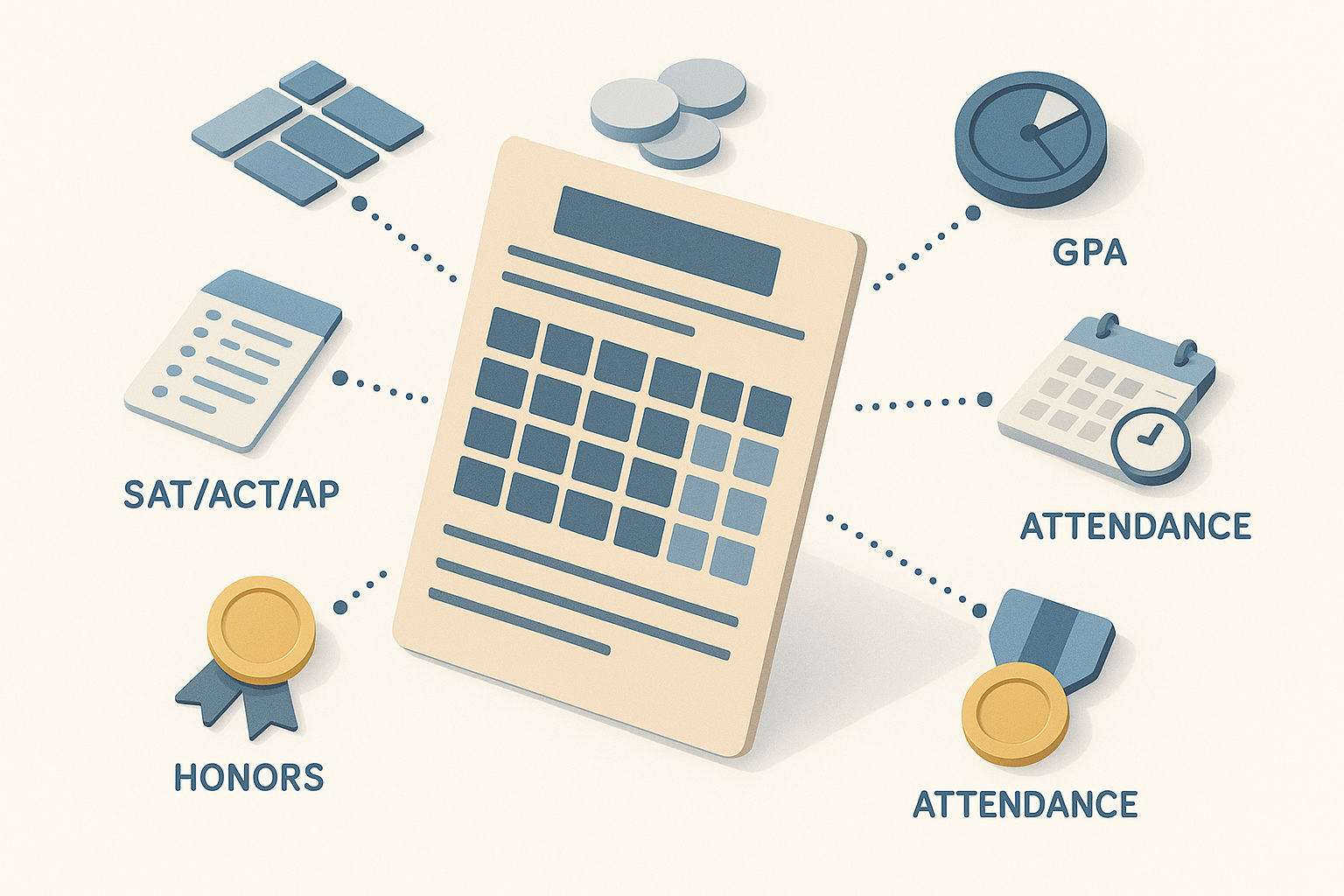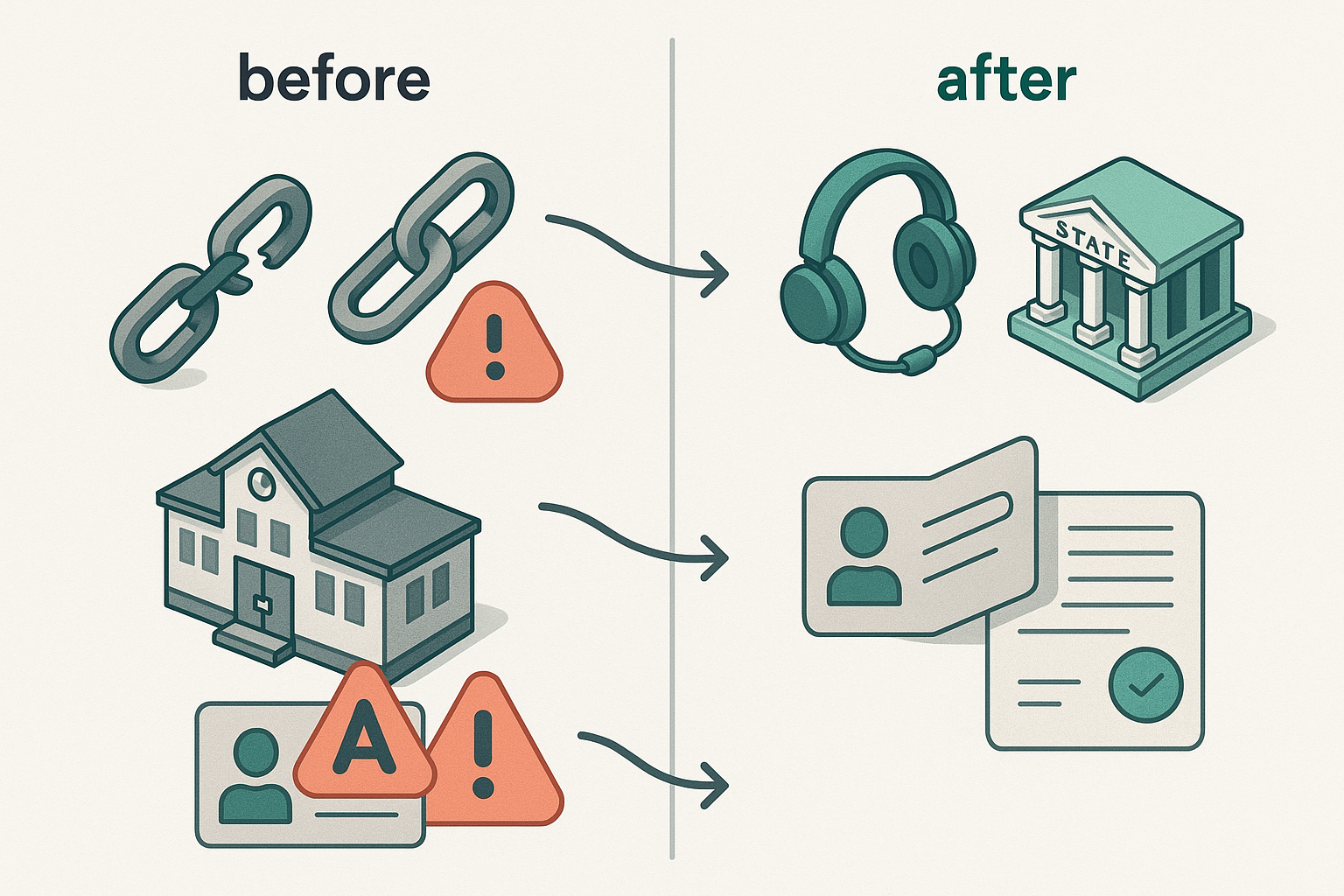High School Transcript: Everything You Need to Know
A high school transcript serves as your official academic record, documenting every course, grade, and achievement throughout your educational journey.
1. What Is a High School Transcript?
This comprehensive document tracks your academic performance from freshman through senior year systematically.
1.1 Definition and Purpose
A high school transcript is an official transcript documenting all completed coursework throughout your academic career.
1.2 When Transcripts Are Created
School districts compile transcripts progressively, adding each semester’s grades as courses conclude throughout your education.
1.3 Common Misconceptions
Transcripts contain more than grades, including GPA calculations, standardized test scores, and comprehensive academic data.

2. Why High School Transcripts Matter
Your transcript influences college admissions, scholarship opportunities, and potential employers’ decisions significantly.
2.1 College Admissions
Universities evaluate transcripts to assess academic rigor, performance consistency, and advanced coursework students complete.
2.2 Scholarships and Financial Aid
Scholarship committees verify GPA and academic achievements through transcripts when determining merit-based financial payment eligibility.
2.3 Employment and Other Opportunities
Employers, internship programs, and professional institutions often request transcripts for graduation verification and standing.

3. Official vs. Unofficial Transcripts
Understanding the distinction between official transcript and unofficial transcripts ensures you provide appropriate documentation.
3.1 Key Differences
Official transcripts bear school seals and arrive directly from institutions, while unofficial versions are student-accessible copies.
3.2 When to Use Official Copies
Colleges, scholarship submissions, military enrollment, and certain employers require authenticated official transcript copies for verifications.
3.3 When Unofficial Copies Are Enough
Unofficial transcripts work for personal review, counselor meetings, or temporary placeholders while awaiting official documents.

4. How to Request Your Transcript as a Current Student
Students have multiple options to request transcripts through their school’s established process and system.
4.1 Visiting Your Guidance Counselor
Schedule an appointment with your counselor, complete required forms, and allow adequate processing time for requests.
4.2 Online Portals and Request Forms
Many schools offer online request systems requiring student login credentials and sometimes parents’ permission for access.
4.3 Tips for Meeting Application Deadlines
Request transcripts early, account for processing delays, and prepare contingency plans for unexpected complications or emergencies.

5. Obtaining a Transcript as an Alumnus
Former students must navigate different procedures to access their high school records after graduation date.
5.1 Locating Your Last School or District
Contact your last school’s registrar office or district website, accounting for potential name changes or mergers.
5.2 Handling Closed or Merged Schools
State education departments and district archives maintain records when schools close, merge, or undergo significant restructuring.
5.3 Using Third-Party Services
Companies like Parchment and NeedMyTranscript streamline transcript order requests through verification process and digital delivery options.

6. Key Elements on Your Transcript
Transcripts contain essential academic information that universities and potential employers use for evaluation purposes.
6.1 Courses, Grades, and GPA
Each course appears with corresponding grades, credits earned, and both weighted and unweighted GPA calculations displayed.
6.2 Test Scores and Honors
Many transcripts include SAT, ACT, AP scores, academic honors, awards, and class rank when applicable.
6.3 Attendance and Behavior Records
Some school districts document absences, tardiness, and disciplinary actions, which can impact certain opportunities or scholarships.

7. Common Transcript Issues and Solutions
Various problems can arise with transcripts, but most have straightforward resolution paths available.
7.1 Missing or Inaccurate Records
Review transcripts regularly, identify errors promptly, and contact counselors or district offices for necessary corrections immediately. If you need help, visit our support page.
7.2 Closed Schools and Lost Documents
State repositories and third-party service often retain records when schools close or documents become temporarily inaccessible.
7.3 Amending Personal Information
Name changes, incorrect birth dates, or address updates require legal documentation like marriage certificates or court orders.

8. State-Specific Requirements and Regulations
Different states maintain unique transcript formats, requirements, and regulations affecting document presentation and acceptance. See our education legal and regulatory framework.
8.1 Variations in Formatting
States use different layouts, credit system like Carnegie units, and varying grading scales requiring careful interpretation.
8.2 Electronic vs. Paper Requirements
Some states offer eTranscript system while certain universities still require paper copies for official admission process.
8.3 Special Cases (Homeschooling, Military)
Homeschooled students create transcripts differently, while military families need consistent records despite frequent school transfers attended.

9. Fees, Processing Times, and Expedited Requests
Understanding costs and timelines helps you plan transcript order requests effectively for various deadlines.
9.1 Typical Costs and Fee Waivers
Transcript fees range from two to ten dollars, with waivers available for current students or low-income families.
9.2 How Long Processing Usually Takes
Standard processing takes three to ten business days, with delays common during peak application deadline seasons.
9.3 Speeding Up the Process
Express mail, digital transmission, and early registrar contact can expedite delivery when facing tight deadlines urgently.

10. Conclusion and Final Tips
Maintain accurate transcript records, request documents early, and consult school counselors for personalized guidance throughout. See our accredited online high school diploma for details.























